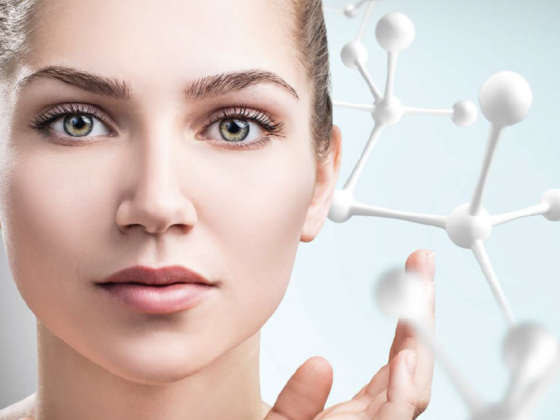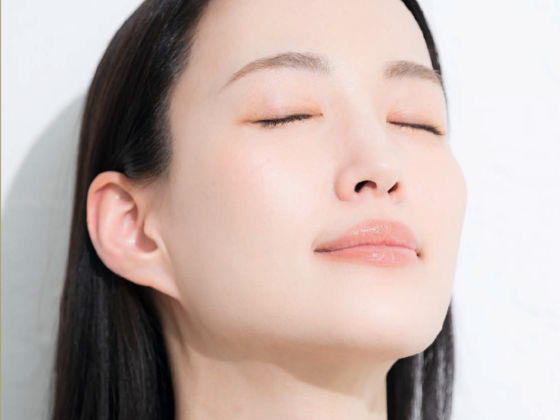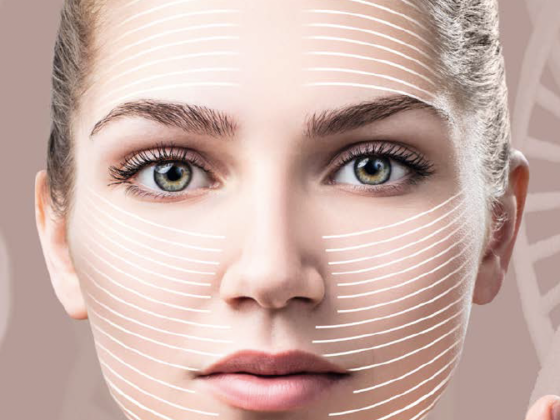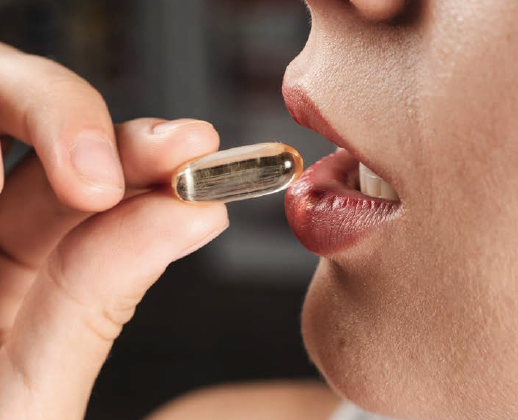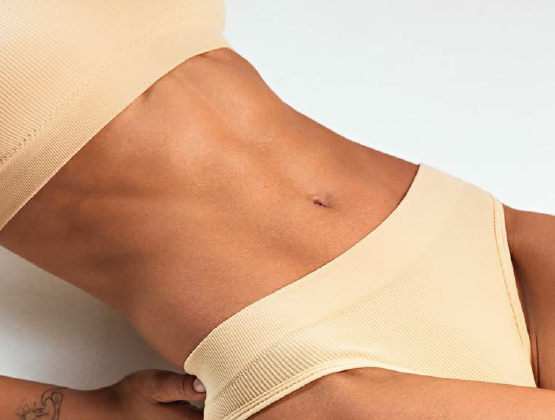Dr Dominique Aknin & Dr Jean-François Bezot
When balance rhymes with comfort and intimate wellbeing.
Dyspareunia due to vaginal infection – whether vaginosis, yeast infection or imbalanced vaginal flora – is a very common reason for consulting a gynaecologist and leads to significant functional discomfort. These infections are often self-medicated, which can weaken the vaginal mucous membrane by stripping it of its natural saprophyte flora. The vaginal microbiota is a complex microbial ecosystem, mainly composed of bacteria like Lactobacillus, which is essential for maintaining gynaecological health. It plays a primordial role in protecting against infection, immune balance and fertility. Its composition varies over the course of a woman’s cycle, under the influence of the ovarian hormones, due to certain treatments such as the contraceptive pill, antibiotics or cortisones, or even insufficient or excess hygiene.
Composition of the vaginal microbiota

Primarily made up of lactic bacteria, it also presents an interindividual variability influenced by hormonal and environmental factors.
The dominant bacteria: Lactobacillus
Lactobacillus (vaginal flora) generally represents 70 to 90% of the vaginal microbiota in a healthy woman. The most common species include:
• Lactobacillus crispatus: associated with a stable and protective microbiota.
• Lactobacillus iners: less stable, often found transitioning into a dysbiotic state.
• Lactobacillus jensenii: produces lactic acid and other natural antimicrobials.
• Lactobacillus gasseri: involved in protecting against certain vaginal infections.
Other commensal and opportunist bacteria
Other microorganisms coexist with Lactobacillus, sometimes playing a pathogenic role in the case of an imbalance:

• Gardnerella vaginalis: involved in bacterial vaginosis, capable of forming a pathogenic biofilm.
• Atopobium vaginae: frequently associated with persistent bacterial vaginosis.
• Prevotella spp., Mobiluncus spp.: anaerobic bacteria that proliferate in dysbiotic conditions.
• Candida albicans: fungus that causes vaginal thrush.
Role of the vaginal microbiota in women’s health
The vaginal microbiota carries out several essential functions:
• Maintains an acidic pH
Lactobacilli produce lactic acid, maintaining the vaginal pH at between 3.8 and 4.5. This acidic environment limits the growth of opportunist pathogens such as Escherichia coli or Staphylococcus aureus.
• Produces bacteriocins and antimicrobial agents
Certain Lactobacilli synthesise bacteriocins, antimicrobial peptides capable of inhibiting pathogenic bacteria. What is more, they produce hydrogen peroxide (H₂O₂), which has an antimicrobial action against certain anaerobic bacteria.
• Competes with the pathogens
Lactobacilli stick to the vaginal epithelial cells, preventing pathogenic bacteria from implanting. They also interfere with pathogenic biofilms, particularly Gardnerella vaginalis.
• Regulates the immune system
The vaginal microbiota interacts with the immune system by stimulating the production of cytokines and regulating the inflammatory response. A balanced microbiota reduces chronic inflammation and limits recurrent infections. Vaginal dysbiosis and pathological consequences of an imbalanced vaginal flora. These are present in 30% of non-menopausal women. When the vaginal microbiota becomes imbalanced, several pathologies can appear:
• Bacterial vaginosis
Bacterial vaginosis is characterised by a reduction in Lactobacilli and a proliferation of anaerobic bacteria (e.g. Gardnerella vaginalis, Atopobium vaginae). It is expressed by abundant and foul-smelling vaginal discharge, and a vaginal pH above 4.5. It increases the risk of sexually-transmitted infections and obstetric complications, and tends to be recurrent or even chronic.
• Vaginal thrush
The excessive proliferation of Candida albicans is often stimulated by an imbalanced microbiota (antibiotics, pregnancy, immunosuppression). It leads to itching, a burning sensation and thick, white discharge.
• Impact on fertility and pregnancy
An imbalanced vaginal microbiota is associated with an increased risk of miscarriage, premature birth and infertility. Certain pathogenic bacteria, such as Ureaplasma urealyticum, can affect the viability of sperm and the success of in vitro fertilisations. In men, too, certain strains are associated with lower-quality sperm (Prevotella, Pseudomonas and Anaerococcus).
Factors that influence the vaginal microbiota
• Hormones: Oestrogens promote the growth of Lactobacilli by stimulating the production of glycogen, their main substrate. The oestrogen-progesterone pill also alters this balance. After the menopause, the reduction in oestrogen leads to a reduction in Lactobacilli and an increase in the vaginal pH, which means less resistance to infections.
• Sexuality: Frequent sexual relations, sperm (alkaline pH) and multiple partners alter the composition of the microbiota.
• Antibiotics: They can destroy Lactobacilli and promote the growth of opportunist pathogens. Maintaining a balanced intestinal microbiota, particularly by using productive strains of butyrate, such as CBM 588, could be a preventative approach for recurrent vulvar-vaginal thrush.
• Intimate hygiene: The rectum is an important reservoir for Lactobacilli that are drawn into the vagina. They pass externally into the vaginal cavity via the vestibule. The excessive use of antiseptic products or vaginal douches alters the balance of the microbiota.
• Stress: The rise in cortisol induced by chronic stress leads to a drop in glycogen, which leads to lactic acid.
• Diet and probiotics: Certain probiotic-rich foods (Lactobacillus rhamnosus, Lactobacillus reuteri) can help maintain a healthy vaginal microbiota. The fibre in fresh fruit and vegetables plays a very important role in the intestine’s production of a rich and varied microbiota, which ensures strong immunity.
• Excess weight, geographical origin and exposure to fine particles: These factors can all influence the balance of the vaginal flora.
In the case of chronic vaginal infections, it is useful to carry out a laboratory analysis of a swab. Thanks to sophisticated new technological advances, such as high-speed sequencing (New Generation Sequencing from Cerba laboratories), a precise classification of the different strains present in the vaginal flora has been drawn up (Ravel et al. classification from I to V, where group IV is the sign of a pathological microbiota), and this is a significant advance with regard to understanding its dysbiosis, the clinical repercussions and the therapeutic options available.
Dr Dominique Aknin & Dr Jean-François Bezot

Dr Dominique Aknin: Medical gynaecologist. CES in sterility. University diploma in gynaecological ultrasound scanning. University diploma in injection and filler techniques University diploma in anti-aging medicine. Interested in offering comprehensive care for women, their inner health and optimising their beauty capital.
More informations: drdominiqueaknin.fr
Dr Jean-François Bézot: Medical biologist. Pharmaceutical doctor, Paris Pharmaceutical Faculty. Former house pharmacist in the Paris Hospitals. Specialist in anti-aging biology and functional proteomics since 1988. Permanent member of the French Society of Aesthetic Medicine. International conference speaker. In charge of the university course in Anti-Aging Medicine (Paris Créteil university).
More informations: biopredix.com





